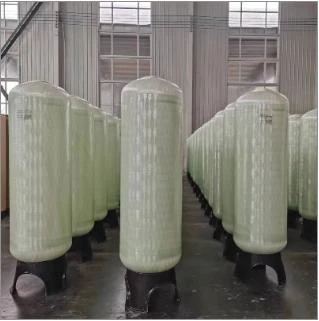loading...
- No. 9, Xingyuan South Street, Dongwaihuan Road, Zaoqiang County, Hengshui, Hebei, China
- admin@zjcomposites.com
- +86 15097380338
- Welcome to visit our website!
UV Water Purification System for Effective and Eco-Friendly Water Treatment Solutions
UV Water Treatment Systems A Comprehensive Overview
Water is essential for life, making its quality crucial for health and well-being. In recent years, UV (ultraviolet) water treatment systems have emerged as a highly effective method of purifying drinking water, wastewater, and even recreational water sources. This technology harnesses the power of UV light to eliminate harmful microorganisms, ensuring that water is safe for consumption and other uses. In this article, we will explore how UV water treatment systems work, their advantages and limitations, and the applications they serve.
How UV Water Treatment Works
Ultraviolet water treatment involves exposing water to UV light, which disrupts the DNA and RNA of microorganisms such as bacteria, viruses, and protozoa. When these pathogens are exposed to UV light, their ability to reproduce is inhibited, effectively neutralizing their threat without the use of chemicals. The process typically involves the following steps
1. Pre-Treatment Before water is exposed to UV light, it may undergo pre-treatment to eliminate larger particles and sediments. This could involve filtration or settling processes to ensure that the water is clear. Turbidity can block UV rays, reducing the system's effectiveness.
2. UV Chamber Water is pumped through a UV chamber where it is exposed to a specific wavelength of UV light (usually around 254 nanometers). This wavelength has been proven to be optimal for disinfection.
3. Post-Treatment Monitoring After UV treatment, the water may undergo additional testing to ensure that the microbial count is below acceptable levels. This step is crucial for verifying the system's efficacy.
Advantages of UV Water Treatment Systems
One of the primary benefits of UV water treatment systems is their ability to deliver rapid disinfection. Unlike chemical treatments that can take time to be effective, UV light operates instantaneously, allowing for quick treatment and immediate use of the water.
Additionally, UV systems are environmentally friendly. They do not introduce any harmful chemicals into the water supply, thus avoiding the potential for chemical byproducts that can occur with methods like chlorination. This characteristic makes UV treatment an appealing option for both residential and industrial applications.
uv water treatment system

Moreover, UV treatment systems have low operational costs. Once purchased, they require minimal maintenance, primarily focused on replacing the UV lamps periodically (typically every 12-18 months) and cleaning the quartz sleeve that surrounds the lamp.
Limitations of UV Water Treatment Systems
Despite their numerous advantages, UV water treatment systems do have limitations. They are not effective against certain types of contaminants, particularly those that are not microbial in nature, such as heavy metals and chemical pollutants. Therefore, they are often used in conjunction with other treatment methods to provide comprehensive water purification.
Another limitation is that UV systems require electricity to operate, which can be a drawback in remote areas or places with unreliable power sources. Additionally, the systems need to be sized correctly to the flow rate of the water being treated; otherwise, they may be insufficient to disinfect the water fully.
Applications of UV Water Treatment Systems
The versatility of UV water treatment systems allows them to be employed in various applications. In municipal water treatment plants, they serve as a final barrier against pathogens, ensuring that the water reaching households is safe. In the food and beverage industry, they are used to treat water that will be used in production, maintaining both safety and quality standards.
Residential systems are also gaining popularity, particularly among consumers looking for effective, chemical-free options for their home water supply. Beyond drinking water, UV systems are employed in aquaculture and swimming pools to maintain clean water environments.
Conclusion
UV water treatment systems offer a modern, efficient, and environmentally friendly solution to water purification challenges. Their ability to effectively neutralize harmful microorganisms without chemicals makes them an attractive option for various applications, from municipal water supply to individual households. As technology advances and the demand for safe drinking water continues to grow, UV treatment is set to play an increasingly vital role in safeguarding public health.
-
The Rise of FRP Profiles: Strong, Lightweight, and Built to LastNewsJul.14,2025
-
SMC Panel Tanks: A Modern Water Storage Solution for All EnvironmentsNewsJul.14,2025
-
GRP Grating: A Modern Solution for Safe and Durable Access SystemsNewsJul.14,2025
-
Galvanized Steel Water Tanks: Durable, Reliable, and Ready for UseNewsJul.14,2025
-
FRP Mini Mesh Grating: The Safer, Smarter Flooring SolutionNewsJul.14,2025
-
Exploring FRP Vessels: Durable Solutions for Modern Fluid HandlingNewsJul.14,2025
-
GRP Structures: The Future of Lightweight, High-Performance EngineeringNewsJun.20,2025
